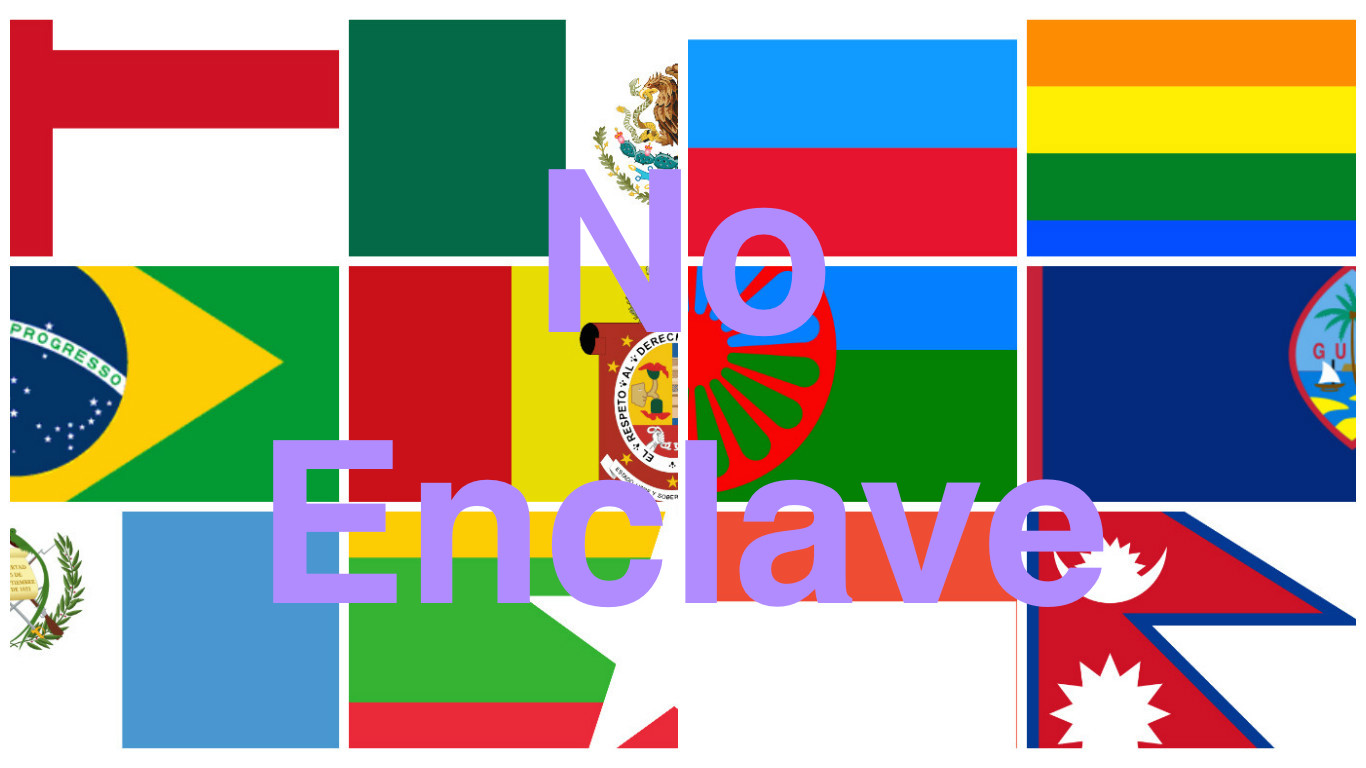
Diversity has long been part of the fabric of Los Angeles and Southern California. Humans first arrived here at least 13,000 years ago and more than twenty Native American nations made their home here before the Spanish Conquest. The Spanish pueblo of Los Angeles was itself founded by people of Native, African, European, and mixed ancestries and in its early years as an American city it attracted substantial numbers of Armenians, Basques, Canadians, Chinese, Dutch, French, Germans, Irish, Italians, Japanese, Jews, Mexicans, Russians, Serbians, Sicilians, and others. For some, ethnic enclaves came into existence (and often vanished). Other people have tended to spread out across the region rather than cluster together — which makes exploring their presence in Southern California more difficult but no less rewarding.

As of the 2010 census, there were 196,691 Americans who self-identified themselves as Taiwanese. 81% of Taiwanese Angelenos were born abroad, the highest such percentage in the city. Although suburbs like Monterey Park and Rowland Heights have been nicknamed “Little Taipei,” there’s never been an official Taiwanese enclave in Los Angeles or, as far as I know, in any other American city. Taiwanese Americans are highly visible in California, though, where about 49% live, and in particular in Los Angeles and Orange county suburbs — in particular, Irvine. That city’s Irvine Chinese School was founded in the late 1970s and is home to that county’s largest concentration of Taiwanese residents and restaurants.In fact, Metro Los Angeles — which includes Irvine — is home to the largest Taiwanese community outside of Taiwan.
Although there is no official Little Taipei, most Taiwanese-Americans in Southern California live in the San Gabriel Valley. Eight of the US’s ten most ethnic Chinese-dominated cities are in that valley and many if not most of them have roots in Taiwan. The San Gabriel Valley is not just home to ethnically Chinese people from China, though, it is home to large numbers of ethnically Chinese from Burma, Hong Kong, Indonesia, Malaysia, Singapore, Vietnam, and Taiwan — something which tends to be glossed over by local media, local gweilo, and the census — which only counts Taiwanese when they check “other Asian” and write in “Taiwanese.”
CHINATOWN
Los Angeles’s original Chinatown arose around 1880 and was centered around the intersection of Alameda and Macy (now Cesar Chavez Avenue). Most of the Chinese living there had come from Guangdong in southeast China to work on the construction of railroads.
In 1931, Old Chinatown was chosen as the site for Union Station and a new Chinatown arose nearby around New Chinatown and the walled China City (built partially from set-pieces of 1937’s The Good Earth), which opened in 1938. In the decades that followed, Chinatown additionally attracted populations of overseas ethnic Chinese, especially from Vietnam, but less often from Taiwan. Most American Chinatowns are still dominated by Cantonese whereas Mandarin and Taiwanese, some of the primary dialects spoken by Taiwanese, are less common.
HISTORY
Archaeological evidence suggests that the island of Taiwan was first settled by humans — possibly an extinct species — between 20,000 to 30,000, when Taiwan was connected to mainland Asia via a land bridge. Some 4,000-5,000 years ago, the people known to us as Austronesians settled the island.
The Austronesians, ancestors of Taiwan’s so-called aborigines, colonized a vast network of islands across the Indian and Pacific oceans, from Madagascar to Rapa Nui and including Hawai’i, Indonesia, Malaysia, New Zealand, and the Philippines. In 1590, Portuguese mariners named the island, “Ilha Formosa,” meaning “beautiful island.” The Formosa Café, despite its name, is not a Taiwanese establishment, though.
The Dutch established a foothold in Taiwan in 1622. They were followed by the Spanish in 1626. Hokkien and Hakka immigrants arrived from Fujian and Guangdong in the years after and in 1662, Ming Dynasty loyalist Koxinga defeated the Dutch and established himself in Taiwan. In 1683, the Qing Dynasty annexed Taiwan and it remained part of China for 212 years — or about 5% of its human history.
TAIWAN UNDER JAPANESE RULE
The Republic of Formosa was proclaimed on 23 May 1895. It was the third Republic established in the region — following the Lanfang Republic (1777) and Republic of Ezo (1869). The republic lacked recognition, however, as the Qing Dynasty had already ceded Taiwan to the Empire of Japan. It was the Empire’s second colony, following the invasion of Taiwan’s neighbor to the northeast, Ryukyu, which had taken place almost 300 years earlier, in 1609.
Taiwan remained under Japanese rule from 1898 until 1945. After Japan’s defeat in World War II, the US handed temporary administrative control of Taiwan to the Kuomintang (KMT)-administered Republic of China. The KMT were corrupt and widely resented. In 1947, a dispute between a cigarette vendor and a KMT official erupted into anti-government demonstrations which were brutally crushed and left 10,000 to 30,000 dead. It came to be known as the 228 Incident, after the date on which it began. After the uprising was crushed, martial law was instituted and a long period known as the White Terror began. In 1949, after the KMT were defeated in China’s Civil War, two million mainland Chinese fled to Taiwan where they sought refuge and where the KMT continued its brutal dictatorial rule. The Democratic Progressive Party (DPP) was founded in 1986, as Taiwan began to implement democratic reforms and today, Taiwan is one. of the most progressive liberal countries in Asia.
IMMIGRATION AND NATIONALITY ACT
It was only in 1968, after the enacting of the Immigration and Nationality Act of 1965 that the first truly substantial numbers of Taiwanese began to arrive in the US. The act abolished the National Origins Formula which had been in place since 1921 and had excluded most African and Asian immigrants from immigrating to the US. Most of the new non-European immigrants were graduate students or professionals and most of the Taiwanese forsook Chinatowns for suburbs like Flushing in New York and in California, the suburbs of San Jose, Monterey Park, and others.
THE SAN GABRIEL VALLEY
Guillin-born realtor Frederic Hsieh (1945-1999) began promoting Monterey Park, located in the western San Gabriel Valley, as the “Chinese Beverly Hills” in Hong Kong and Taiwan. In 1970, when Hsieh bought his first property, the population of Monterey Park was 15% Asian — albeit almost entirely Japanese. A working and middle class suburb, it had little obvious in common with Beverly Hills beyond its hilly topography. In 1983, Tianjin-born/Taiwan-raised Lily Lee Chen became the first Asian female mayor of an American city but Taiwanese immigrants found that they weren’t always welcomed. In 1985, efforts were made to require English signage in Monterey Park and many Taiwanese moved to nearby Alhambra, Arcadia, North El Monte, San Marino, and Temple City. Additionally, with conditions significantly improved in Taiwan, there was less incentive to leave that country and immigration from Taiwan decreased although the slack was largely picked up by Hoa, Hongkongers, and Mainlanders.
At the other end of the valley, large numbers of Taiwanese settled in Diamond Bar, Hacienda Heights, Ramona, Rowland Heights, and Walnut. When plans were announced in 1981 to build Fo Guang Shan Hsi Lai Temple (佛光山西來寺) in Hacienda Heights, some residents expressed concern over the possibility of pre-dawn gongs, loud chanting, conversion of Christian children, and most amusingly, animal sacrifices. Despite the hostility, the temple was completed in 1988 and, not surprisingly to anyone moderately educated about major religions, there was vegetarian food, not blood sports.
OPENING OF TAIWAN
The KMT’s leader, Chiang Kai-Shek, died in 1975. His son, Chiang Ching-kuo, assumed power in 1978 (after his father’s vice premier had served the rest of the elder Chiang’s term). In December of that year, the US normalized relations with the People’s Republic of China. Although the PROC has never administered Taiwan, they have often claim that Taiwan is an integral part of it because the majority of non-aboriginal Taiwanese are Han. The same could also be said of Singapore as well as about a dozen suburbs of Los Angeles… but that would be absurd, right?
Chiang Ching-kuo relaxed some of the KMT’s harsh authoritarian rules but, although he assumed the title of Chairman rather than Director General, the junior dictator remained in power until his death in 1988. Martial Law ended the following year and Taiwan finally opened its doors to the world. In 1995, Taiwan implemented universal healthcare. In 2019, Taiwan became the fist country in all of Asia to legalize same-sex marriage. Today, the Economist Intelligence Unit classifies Taiwan as a full democracy with a score of 8.99 out of 10 — No. 10 in the world and No. 1 in Asia. The US, for the record, is ranked by the same organization as a flawed democracy with a score of 7.85 — No. 31 in the world and No. 3 in North America.
TAIWAN CINEMA
Taiwan’s cinema first gained international attention with the career of Beijing-born Hu Jinquan (胡金銓) — better known as King Hu, who pioneered the wuxia subgenre of martial arts films. Hu began at Hong Kong’s Shaw Brothers studio before moving to Taiwan in 1966, where he made classics like Dragon Gate Inn (龍門客棧, 1966), A Touch of Zen (俠女, 1971), and The Fate of Lee Khan (迎春閣之風波, 1973). He also made two underrated and under-seen films in Korea; Raining in the Mountain (空山靈雨, 1979) and Legend of the Mountain (山中傳奇, 1979). Hu was also an Angeleno. He and his wife, writer Chung Ling, moved to Metro Los Angeles in 1984 and he remained an Angeleno until his death, in 1997. He was buried in North Whittier‘s Rose Hills Memorial Park.
Taiwan’s cinema suffered when Hong Kong films flooded Taiwan’s cinemas and VHS grew more popular. Taiwan’s Central Motion Picture Corporation responded by promoting Taiwanese directors like Chen Kun Hao, Edward Yang, Hou Hsiao-Hsien, Ko I-Chen, Sylvia Chang, Tao Te-Chen, and Ang Lee. Critics called the movement, New Taiwan Cinema (or Taiwanese New Wave) and its leader, Yang, was a Taiwanese Angeleno.
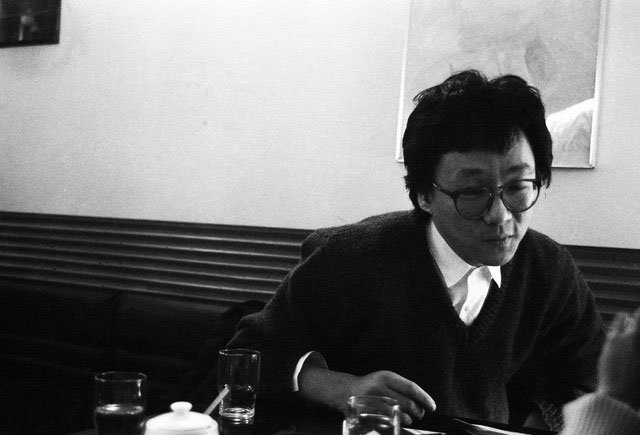
Yang enrolled as a film student at University of Southern California in 1974. He dropped out after one year, however, convinced that the school’s priorities were overly commercial. He next applied to Harvard‘s architecture school but instead ended up in Seattle, working on computer software. There, his love of film was re-awakened by a viewing of Werner Herzog‘s Aguirre, der Zorn Gottes. Back in Taiwan, Yang directed a chapter of the anthology film, 光陰的故事 (In Our Time) with Ko I-Chen, Tao Te-Chen, and Yi Chang. Yang went on to make seven acclaimed feature films and ultimately returned to Los Angeles after making his final film, 2000’s 一一 (Yi Yi). He lived with his second wife, Kaili Peng, in Beverly Hills (the real one, not Monterey Park) until his death from cancer at the age of 59 in 2007.
On television, the modern era of Taiwanese drama kicked off with Big Hospital, Little Doctor (2000). Although nowhere near as well-known internationally as Korean dramas, since 2006 Taiwan has produced about a dozen or so of the series a year. 雙城故事 (A Taiwanese Tale of Two Cities) was set and filmed in San Francisco. 真愛趁現在 (Love, Now) features a Xinyi location of California Pizza Kitchen — the chain founded in Beverly Hills. As far as I know, that’s as about as close a connection as Taiwanese television made with Los Angeles.
Better known in the US than any Taiwanese television program are the CGI news videos produced by Next Media Animation (蘋果動新聞), which became widely viewed in America after their 2010 video about Tiger Woods‘s off-course antics. They entered the America television landscape when they engaged in a mock feud with Conan O’Brien.
FOUR ASIAN DRAGONS
Lee Teng-hui, unlike his predecessors, was born in Taiwan. During his rule, he introduced more democratic reforms and was ultimately expelled by the KMT for his support of Taiwanese independence from China (the KMT view the Republic of China as the legitimate ruler of not just Taiwan but mainland China, Mongolia, Tuva, and more). Taiwan’s economy developed rapidly in the 1990s and — along with Hong Kong, Korea, and Singapore — it came to be known as one of Asia’s Four Little Dragons (or sometimes the Four Asian Tigers). When I was a child, a sticker stating “Made in R.O.C.” was usually affixed to a cheap toy or low-tech appliance such as an alarm clock. When I visited my sister in Taipei in 2010, many of my friends still thought of Taiwan in that light. One co-worker told me to get him a souvenir because he’d always wanted something that was “Made in Taiwan.” Even more people confused Taiwan with Thailand.
Nowadays, however, Taiwan as a highly developed country. The “made in Taiwan” label is more likely to be found on a quality bicycle (like mine) or piece of sophisticated electronic equipment (including a former flat-screen television). Today (not counting very small sovereignties like Monaco, Singapore, and Vatican City), only Bangladesh is more densely populated than Taiwan.
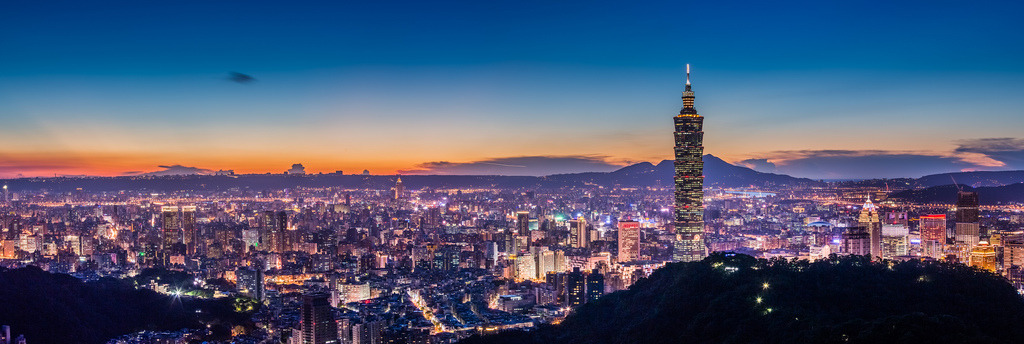
78.9% of Taiwanese live in cities. Taipei 101, built in 2004, was the world’s tallest building until 2010. Taiwan High-Speed Rail began operation in 2007. Some 49.4% of Taipei’s population rides mass transit every day.
SECOND NEW WAVE OF TAIWANESE CINEMA
A second new wave of Taiwanese Cinema introduced Chen Kuo-fu, Huang Ming-chuan, Jay Chou, Leste Chen, Stan Lai, Tsai Ming-liang, Tsui Siu Ming, Tom Lin, Yi Chih-yen, Yonfan Manshih, and Wu Nien-jen. In the US, there is a surprisingly long history of Chinese-American film, mainly produced in San Francisco’s Chinatown (birthplace of Bruce Lee) but it likely wasn’t until Peter Wang’s A Great Wall is a Great Wall (1986) that a Taiwanese-American directed a feature film. Wang is based, I think, in San Francisco. Ang Lee, an even higher profile Taiwanese American director whose career began not long after, is based in New York.
Since the Taiwan Academy in Los Angeles (more on that organization later) is no longer focused on showcasing Taiwanese cinema, opportunities to see Taiwanese films in Los Angeles are fewer and farther between. Taiwanese films occasionally screen at Monterey Park’s AMC Atlantic Times Square 14, although they tend to be mostly commercial, rather than artistic, Taiwanese films. The fare screened by the Taiwan Video Club, on the other hand, tends to be more creatively ambitious. Taiwan Video Club screens their film selections on the campus of California Institute of the Arts (CalArts), in Santa Clarita. In 2015, the University of Los Angeles, California featured a series titled Also Like Life: The Films of Hou Hsiao-Hsien. In 2021, Tsai Ming-liang was featured in an event called An Evening Conversation with Tsai Ming-liang 蔡明亮, part of UCLA‘s Taiwan in Dialogue lecture series. Most recently, I caught a screening of Hou’s underrated (and in my estimation, misunderstood) Millenium Mambo at 2220 Arts + Archives in Filipinotown.
TAIWANESE-ANGELENO FILMMAKERS

Taiwanese Angeleno filmmakers whose careers followed include Angel Teng, Arvin Chen, John M. Chu, Jude Weng, Buena Park-raised Justin Lin (Shopping for Fangs, Better Luck Tomorrow, The Fast and the Furious 3–6), Lynn Chen, Melissa Yu, Shiouwen Hong, Ted Fu (of Wong Fu), Tiffany Frances, and Timothy Tau.
Television writer and producer Alan Yang‘s parents are from Taiwan and film producer Dan Lin was born in Taipei and was raised in the Los Angeles area. Ada Tseng and Brian Hu, co-hosts of the Asian American pop-culture-themed podcast, Saturday School, are both Taiwanese American (and the latter authored Worldly Desires: Cosmopolitanism and Cinema in Hong Kong and Taiwan). Producer Wayne Chang is also from Taiwan.
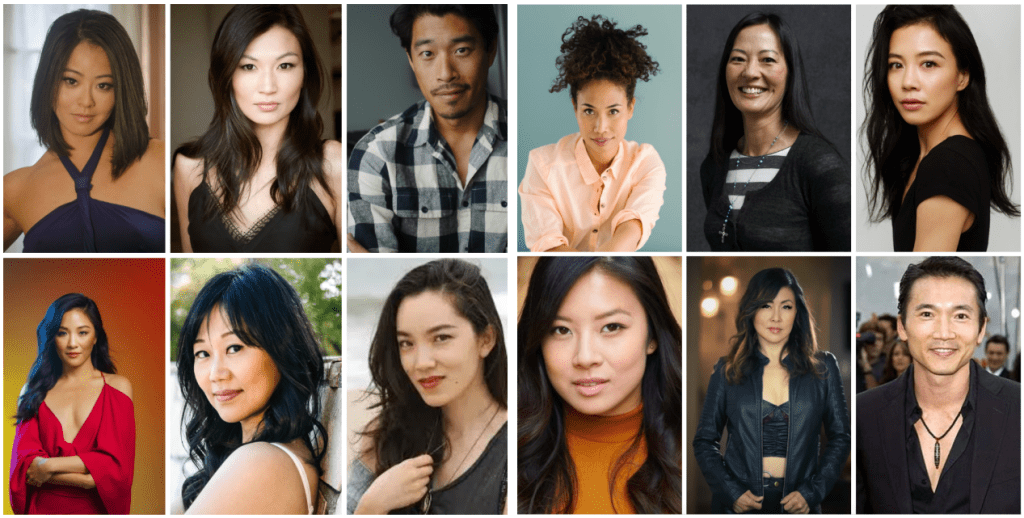
Taiwanese Angeleno actors include Michelle Krusiec, Courtney Lin, Elaine Kao, Jessika Van, Constance Wu, David Shih, Fernando Chien, Hana Wu, Ivan Shaw, Kelvin Yu, Christine Ko, Rosalind Chao, Julia Ling (née Xiao Wei Lin), Tim Chiou, PeiPei Alena Yuan, Jen Van Epps 柏珍宇, and Collin Chou. Comedians Atsuko Okatsuka (also an actress) and Jenny Yang are also Taiwanese.
TAIWANESE ART & TAIWANESE ANGELENO ARTISTS
The history of art in Taiwan may’ve begun 30,000 years ago, with the first prehistoric inhabitants of what is now Taiwan. The Taiwanese aborigines made earthenware and jade objects beginning around 5,000 years ago. The Nationalists who came to Taiwan in 1949 brought with them a large number of art from the Qing Empire and artists like Chang Dai-chien, Huang Chun-pi, and Pu Ru represent a strain of Taiwaese artists who preserved Chinese traditionalism after it was out of fashion in Communist China. At the same time, the presence of and close ties with the US facilitated the introduction of American pop culture and then newer art trends like abstract expressionism. Avant garde art was embraced and promoted by the May Art Association, the Eastern Art Association, and the Ton-Fan Group — but opposed by the right wing authoritarian KMT.
Los Angeles has produced or been home to quite a few Taiwanese and Taiwanese American artists, including designer Amy Wang; graphic designer Jye Yang; motion designers Jieyi Lee and Yi-Chi Chou; food stylist (and chef) Anna Lee; photographer Chung-Ping Cheng; and artists Cha-Rie Tang, Ching Ching Cheng, Kat Tsai, Pearl C. Hsiung, Ryan Hong, and Shan Wu.
TAIWANESE ANGELENO MUSIC
One of my favorite musicians is a Taiwanese Angeleno, the eccentric, talented, San Gabriel-and-Taipei raised singer/musician Joanna Wang. She began her career as a cover artist whose covers, to be honest, didn’t do much for me but made her very popular. Then she began writing much more interesting original material and choosing more interesting material to cover. To help make sense of it all, I wrote a guide: Introduction to the Music of 王若琳/Joanna Wang for the Use of the English-Speaking World.
I’m also a big fan of the dreamy, shoegazey Polartropica, which is led by/the musical project of Ihui Cherise Wu. Wu was born in Taipei but raised in San Jose from the age of two. They attended University of California, San Diego and after school, moved to Los Angeles, where they played in several bands before forming Polartropica.
Other Taiwanese Angeleno musicians include cellist-composer Cora Chung, DJ Wuwu (Esther Wu), composer-musician GuangXin Li; singer-songwriter Hueimin Kuan, songwriter Jackie Young, Kaiyun Yang of Kyky Yang; composer Sampson Chou, rapper-singer Baer (Sabrina Chang), drummer Shawn Tseng, Steven Chen of the Airborne Toxic Event, Amber Josephine Liu, Elise Go, Gloria Fanchiang, and Mark Yi-en Tuan of GOT7). And because Los Angeles is both a large city and home to the (say it with me) largest Taiwanese community outside of Taiwan — it’s not uncommon to have the opportunity to see Taiwanese musicians perform locally, as I did not long ago, when Sunset Rollercoaster breezed into town.
TERESA TENG

The most famous Taiwanese Angelena musician is rarely acknowledged, if ever, as an Angelena — and yet she not only lived in Los Angeles, attended school in Los Angeles, and dated in Los Angeles; she recorded an album in Los Angeles, and recorded three music videos in Los Angeles.
Teresa Teng (鄧麗君) was a superstar throughout East and Southeast Asia. She was born in Taiwan but sang songs not just in Hokkien and Mandarin but Cantonese and Japanese as well. She was especially beloved in Japan and is sometimes even credited with helping bridge the cultural gap between Taiwan and its former colonizer. However, after Japan shifted its recognition from the ROC to the PROC, Teng was arrested trying to enter Japan on a bootleg passport in 1979. Afterward, she moved to Los Angeles where she lived with her younger brother for a time.
Hardly laying low, though, 1979 must in fact have been a key year for Teng as it was then that she enrolled in a college preparatory English program at UCLA and recorded the album, 甜蜜蜜 (which I believe translates to “sweet honey”). Teng recorded the music videos for the songs “伊人何處,” “野生花,” and “初恋的地方” on the UCLA campus and on Bunker Hill.
Tragically, she died at the age of 42 whilst in Thailand. In 2007, a Japanese biopic was released about Teng, called テレサ・テン物語 (Teresa Teng Monogatari).
OTHER TAIWANESE ANGELENOS
There are several notable Taiwanese-Angelenos, including teacher Anne Hwang; YouTube personality KevJumba; two of the Los Angeles Times‘ best writers, Cindy Chang and Frank Shyong; food writer Esther Tseng, journalist Josie Huang; my occasional California Fool’s Gold companion, Bruce Chan, novelist Jean Chen Ho, writer Jeremy Atherton Lin, Lorraine Lin or Speaq, children’s author Karen Chan; product designer Mindy Wang; Travis Chen of SoundMind; performance artist Jasmine Lin, and dancer Sandra Shih-Yuan Chiu.
TAIWANESE FOOD
There are several culinary contributions associated with Taiwan — although they are less often acknowledged or identified as such than one might expect. Mongolian Barbecue, for example, is neither Mongolian nor barbecue — despite often being categorized as such by borderline useless websites like Yelp. First appearing in the 1950s in Taipei, Mongolian BBQ is actually derived (like lots of Taiwanese cuisine) from Japanese cooking traditions — in the case of Mongolian BBQ — teppanyaki. Although Taiwan strikes me, personally, as the most Japanese place outside of Japan — and although Taiwan’s relationship with its former colonizer seems inarguably less contentious than, say, South Korea — in the immediate post-colonial era, people were eager to erase Japan from the menus. Thus, teppanyaki became Mongolian, which was suitably exotic if not especially sensible. Nomadic Mongolians traditionally rely on their herd animals for their nutritional needs and have no tradition of lugging around gargantuan iron griddles across the steppes on which to chop up farm animals and vegetables..
Moachi makes no attempt to hide its Japanese origin — but fillings are as likely to include fruits like durian or taro as they are popular-in-Japan fillings like strawberry or green tea. Coffin board (or coffin bread) first appeared in Tainan in the 1940s, during the Japanese occupation — but bears little resemblance to any Japanese dish with which I’m familiar. General Tso’s Chicken was created by Taiwan-based Hunanese chef Peng Chang-kuei (彭長貴) in 1955.
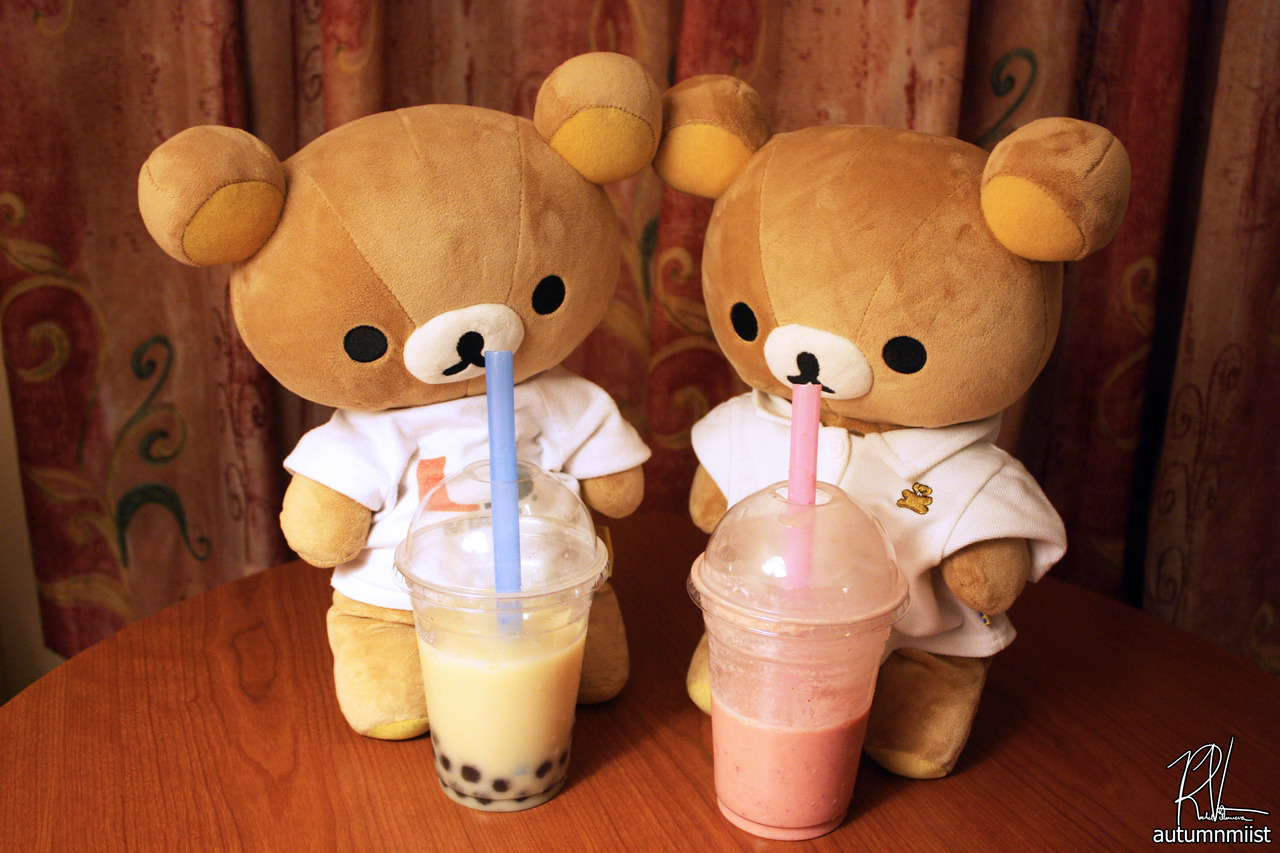
Boba tea was invented in Taichung in the 1980s and is now Instagram fodder for millions of teenage girls and other fans of tapioca balls in their drinks. Much older popular Taiwanese dishes include snow ice (aka baobing), and stinky tofu. There are also all kinds of vegetables consumed in Taiwan uncommon elsewhere and probably in some cases unique: Fiddlehead fern and water asparagus are just a couple that come to mind, but that’s partly because I don’t know the names of many. In fact, by most estimates, Taiwan is the second-most vegetarian-friendly country in the world, after India.
Monika Treut‘s documentary The Raw and the Cooked is an entertaining place to start (or revisit). Clarissa Wei is a Taiwanese-American food writer, much of whose work focuses on the Chinese and Taiwanese food scene in Los Angeles County. Check out her piece, 10 Best Taiwanese Restaurants in Los Angeles.
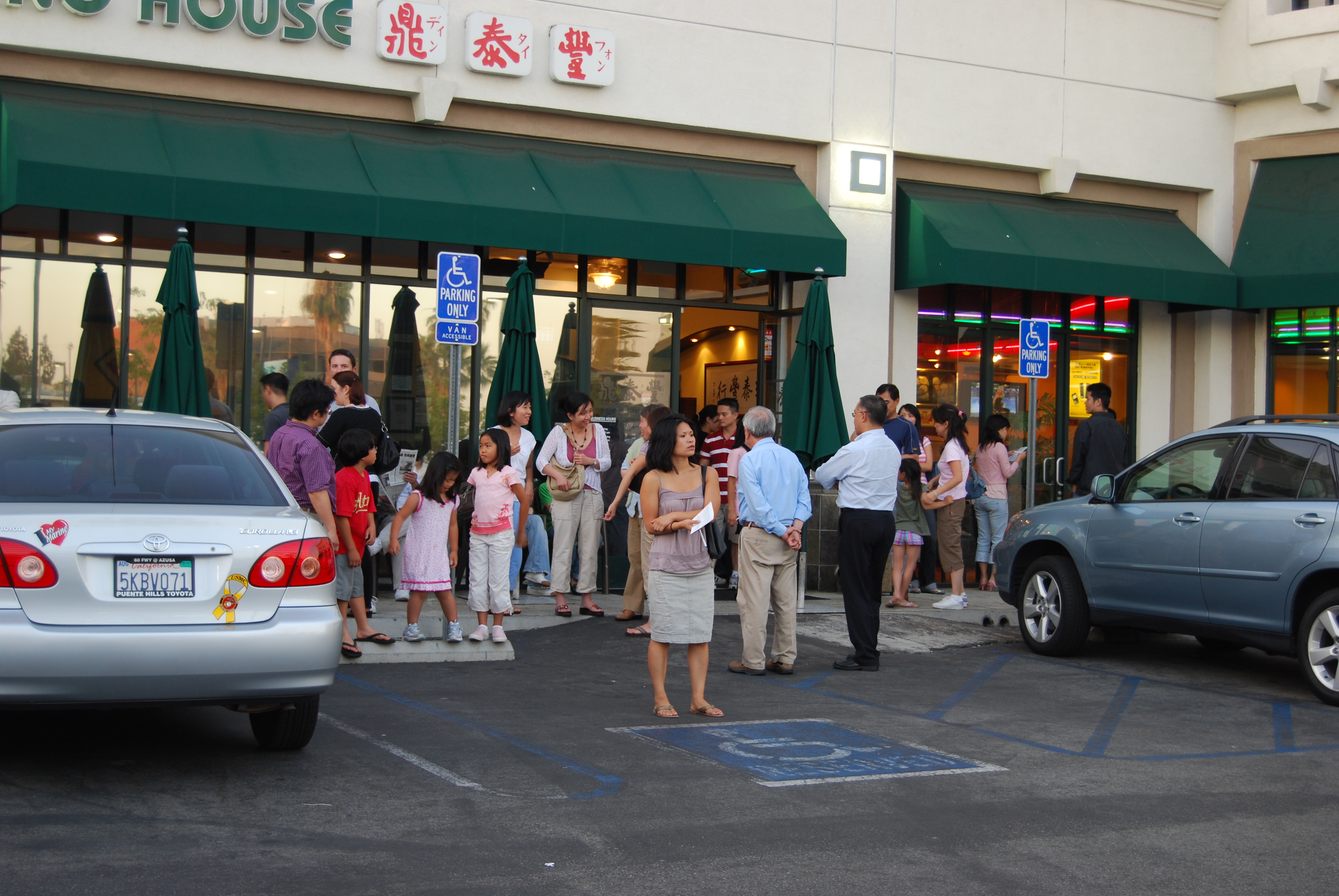
Chains with Taiwanese roots that are represented in the Southland include A & J Restaurant, Ajisen Ramen, Bake Code Bakery & Cafe, Blackball Taiwanese Dessert, Boiling Point, Cha For Tea, Chatime, Chicha San Chen, Coco Fresh Tea & Juice, Din Tai Fung, Duke Bakery, 85C Bakery Café, Four Sea Restaurant, Gong Cha, The Guppy House, Half & Half Tea Express, Happy Lemon, JJ Squared, Latea Bubble Tea Lounge, Lollicup Coffee & Tea, Meet Fresh, 101 Noodle Express, OneZo, Quickly, Sharetea, Sweet Veggie (a vegetarian Taiwanese-American chain), Tan-Cha, Tapioca Express, Tea Station, Ten Ren Tea, Tiger Sugar, Tofu King, Yi Fang Taiwan Fruit Tea, Young Ho, and Xing Fu Tang.
Popular Taiwanese restaurants (or at least restaurants serving Taiwanese dishes) in Los Angeles County include A Plus Tea House, Au79 Tea Express, Bean Sprouts, Blockheads Shavery, Bull Demon King Cafe, Canaan Restaurant, Class 302, Copycat Café, Dolphin Bay Café, Earthen Restaurant, Good Shine Kitchen, Hot Spot, Huge Tree Pastry, Jazz Cat Restaurant, Ju Ju Shine, Kang Kang Food Court, Lee’s Garden, Mama Lu’s Dumpling House, Mandarin Noodle House, Mighty Boba Truck, MJ Café Express, Monja Taiker, Nice Time Café, Noodle King, Old Country Café, Pine & Crane, Pingtung, Remy’s Noodle Palace, ROC Kitchen, SinBala Restaurant, Taipei Bistro, Tasty Noodle House, Tbay, Tofu King, Vege Paradise, Volcano Tea House, Why Thirsty, Wonderful Restaurant (likely the oldest Taiwanese restaurant in Los Angeles County), and Yi Mei.
Taiwanese restaurants and those serving Taiwanese dishes in Orange County include Ah-Lien Hot Pot, The Balcony Grill & Bar, Capital Express Drink, Champion Food, Chef Chen, Chef Hung Taiwanese Beef Noodle, Class 302 Café, Diho Bakery, First Sandwich, Formosa Chinese Restaurant, Han Taiwanese Restaurant, Home Town Deli, I-Tea Café, Kingchops, Little Sheep Mongolian Hot Pot, MJ Cafe Express, Nice Food Restaurant, O’Shine Taiwanese Kitchen, Popcorn Chicken, 17 Cafe Ramen, Tasty Noodle House, ,and Yu’s Garden.
Taiwanese grocery chain 99 Ranch Market was founded in Little Saigon in 1984 by Taiwanese-American Roger H. Chen. Heartland Organic & Natural Foods opened its first café in Walnut in 2002 LOHAS Fresh Mart is a market chain with four locations in the San Gabriel Valley founded by Taiwanese-American grocer, Joseph Lee. In 2013, the Overseas Community Affairs Council instituted the Overseas Quality Restaurant program which awards outstanding Taiwanese restaurants with an OQR emblem, several of which can be found in Southern California.
Although night markets exist in China, Indonesia, Malaysia, the Philippines, Singapore, and Thailand, they are associated with no country more than Taiwan, where they flourish within every reasonably large city. In 2012, Taiwanese-American couple Janet and Jonny Hwang launched the 626 Night Market, which after beginning in Pasadena moved to Arcadia. I have visited it and the Taiwanese vegetarian night market, 素食夜市小吃園遊會 Happy Lantern Green Night Market, several times — as well as others, as our local night market season grows. (see: Pan-Asian Metropolis — Southern California Night Markets)
TAIWANESE BEER & PIJIU WU
At a pijiu wu, beer is the main attraction and its consumption is encouraged by hot, salty, and often fried snack. I expect, because of beer’s aforementioned history in Taiwan — and because of the overall “vibe” of pijiu wus, that they evolved from Japanese izakayas. Local pijiu wu include B20 Bar & Grill, Jurassic Restaurant (UPDATE: CLOSED!), Uncle Yu’s Indian Theme Restaurant, and Wala Wala Restaurant. These pijiu wus are often themed, something I first encountered at the Bavarian-themed Der Löwe in Taipei. Sadly, the lavatory-themed Magic Restroom Café closed before I had a chance to experience it. I don’t believe that it was a pijiu wu, though — just a Taiwanese cafe with a questionable theme.
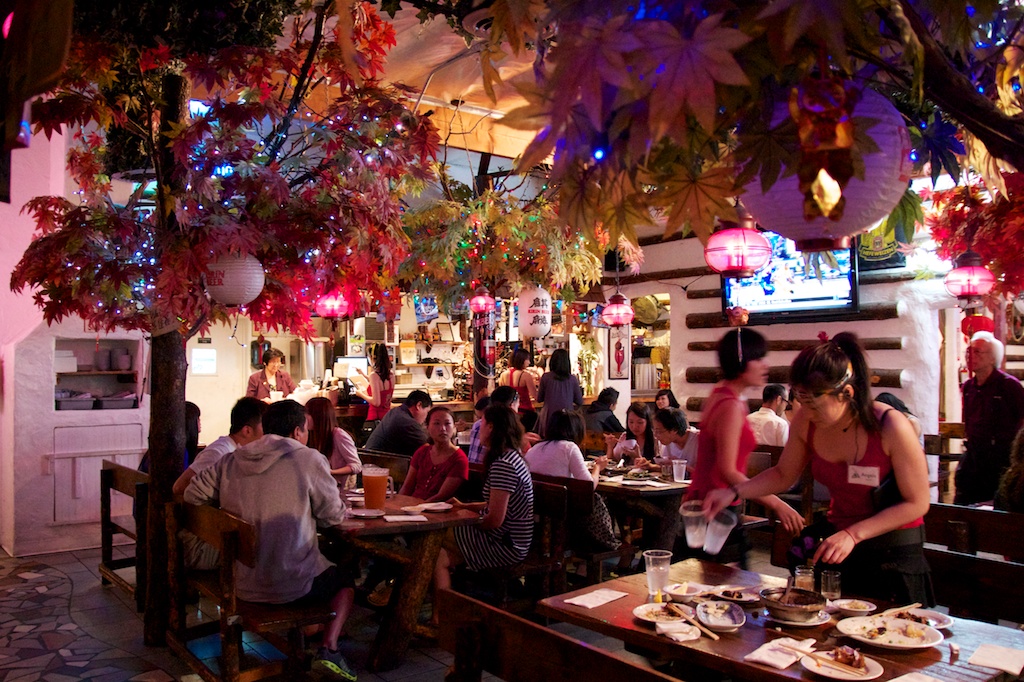
TAIWANESE MEDIA & CULTURAL ORGANIZATIONS
Aspects of Taiwanese culture that are popular in the US include the food, night markets, boba, wuxia, and pijiu wu whilst others, such as betel nut kiosks and graveside erotic dancers remain relatively unknown here. Only able to understand about five words of Mandarin, I can’t comment on the subject matter of most local Chinese media. There are, however, radio stations and several Chinese television stations.
AM 1300 KAZN 中文廣播電臺 launched in 1993. Originally broadcasting programs in sixteen different languages, today it is in Mandarin. For people with broadcast televisions, 18.8, 31.7, 31.8, 44.3, 44.6, 44.7, 44.8, 44.9, 57.9, 62.2, and 62.6 all broadcast in Chinese — although I’m not sure which are in Cantonese, which are in Mandarin, and which are in Taiwanese or some other language. Let me know if any show glove puppetry program Pili.
Taiwan’s Ministry of Culture, as part of its mission to promote Taiwanese culture overseas, oversees the Taiwan Academy which operates branches in numerous countries. The Los Angeles branch, Taiwan Academy in Los Angeles, opened in Westwood (at 1137 Westwood Blvd.) in 2014 and is open from 9 am to 6 pm, Tuesday through Saturday. Their programming includes free music, dance, lectures, food in Westwood and occasionally, the Diamond Bar Public Library.
The 16th annual Taiwanese American Heritage Week celebration will take place at the Cal State L.A. Student Union in University Hills on 17 and 18 May, from 10:00 am – 7:00 pm. It is scheduled to include seminars, art exhibits, glove puppetry, karaoke, live entertainment, and food. Entry is free. Cal State LA Station is served by Metrolink’s San Bernardino Line, Alhambra Community Transit, East LA Sol, Foothill Transit, Monterey Park Spirit Bus, and Metro‘s 71, 76, 256, and 487/489 lines.
Support Eric Brightwell on Patreon



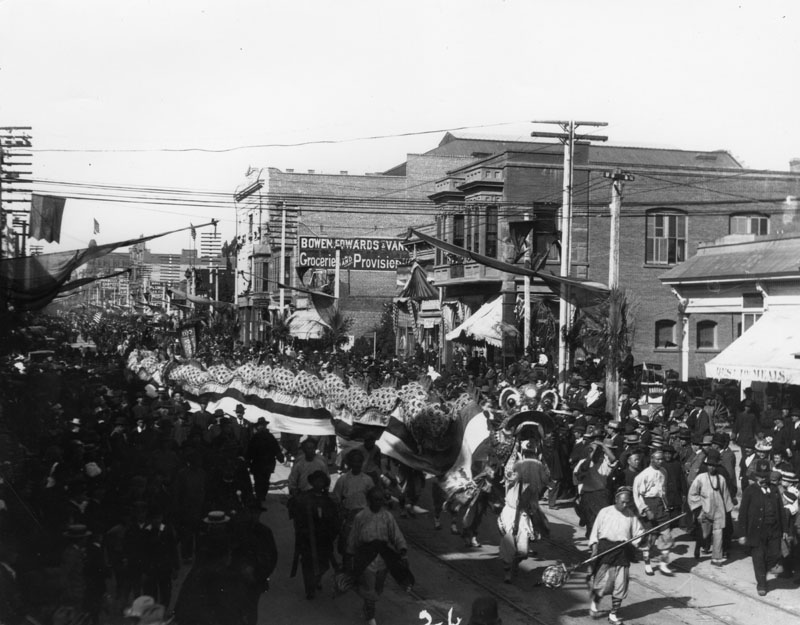

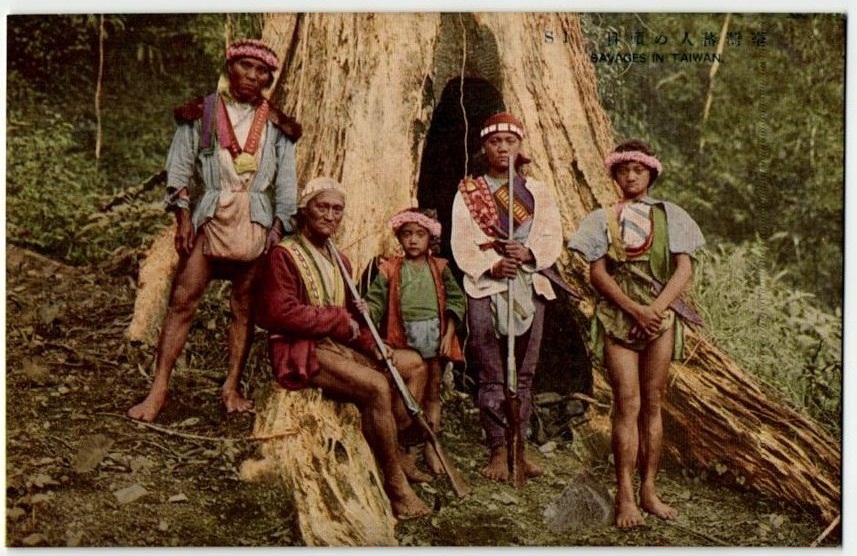

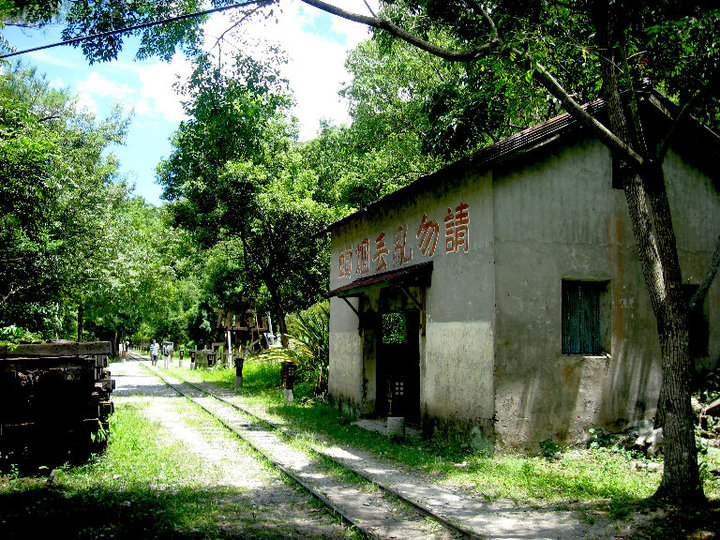
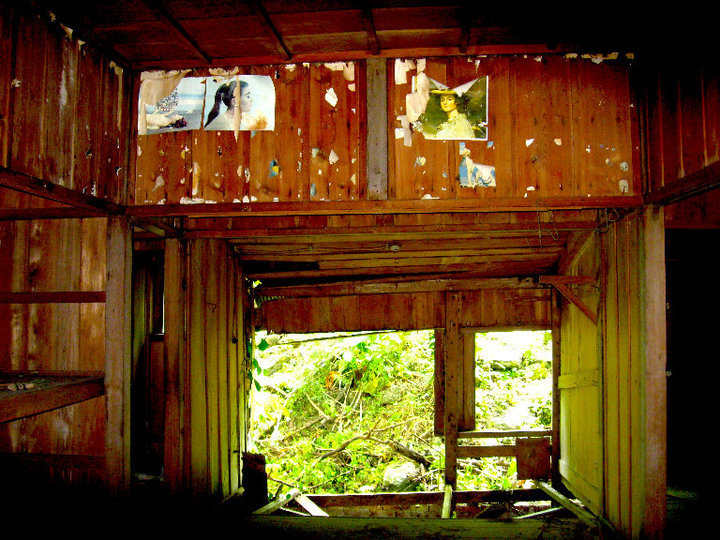




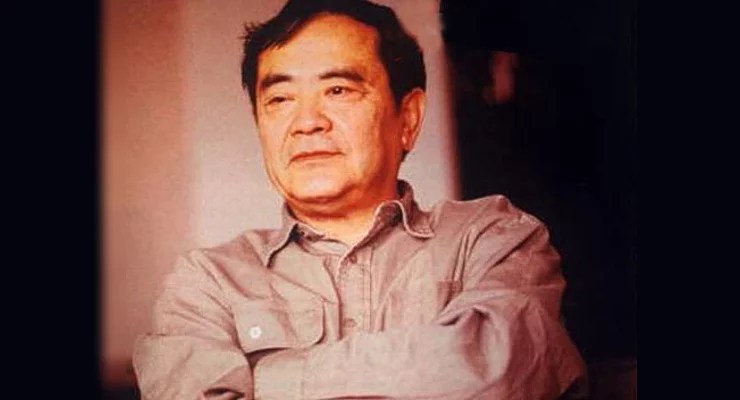
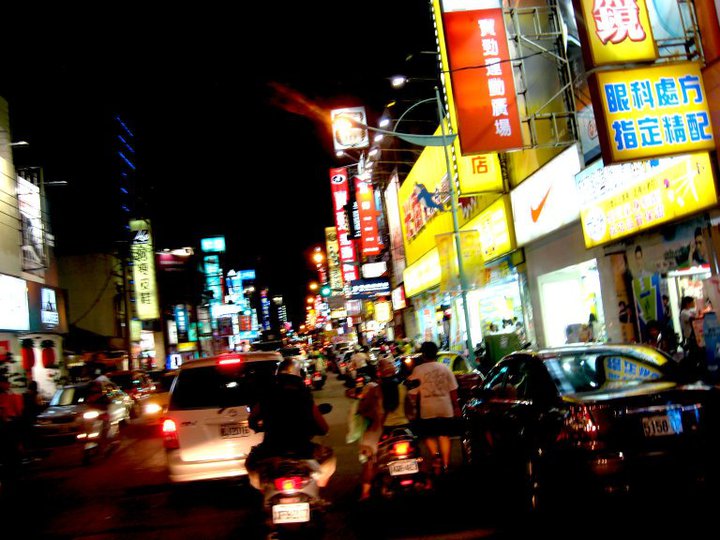
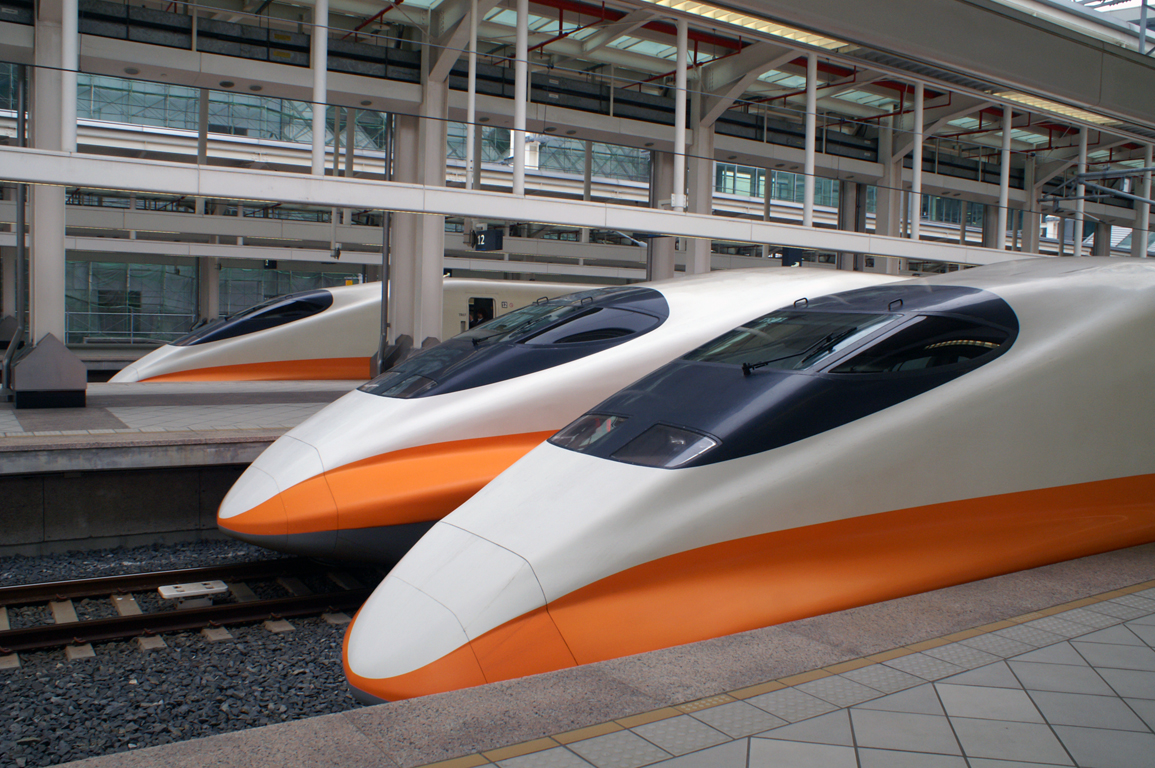





glad you enjoyed it
LikeLike